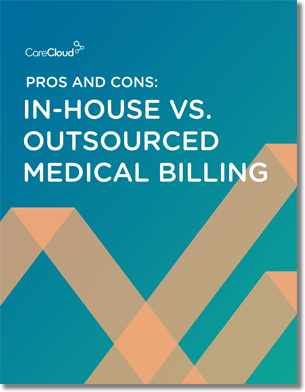Physical therapy is one of the most rewarding professions. But, physical therapists are also undoubtedly aware of the intricate nature of therapeutic interventions. These providers spend so much time and energy ensuring their patients recover to the best of their abilities. Medical billing and physical therapy modifiers can be even more challenging here, than other practices.
In medical billing, modifiers are pivotal in enhancing the accuracy, specificity, and effectiveness of medical coding and credentialing. In physical therapy, modifiers help understand the details of services provided, thus improving the medical billing and coding process. In this article, you will learn about the different physical therapy modifiers in medical billing.
What are Modifiers?
But most importantly, what are modifiers?
Modifiers are characters that are extensions to CPT or HCPCS Level II codes that help provide extra information about the medical procedure, service, or supply. They specify details about the encounter without changing the meaning of the code.
Physical therapists can use modifiers to modify the medical codes for different conditions, indicating that a service was performed differently. Modifiers also offer information that is not evident from the code descriptor. Some payer programs may have modifiers that apply only when you report codes in connection with those programs. They help providers document the change in the procedure so they can be accurately reimbursed. Modifiers help improve medical billing by making claims more precise. This speeds up claim processing and helps avoid denials. It is important to understand the types of modifiers and use them properly to ensure error-free medical billing. Using the wrong modifier can result in your claim being rejected, payment delays, or revenue loss.
Types of Physical Therapy Modifiers
CPT Modifiers
CPT modifiers are two-digit modifiers usually used when billing Medicare and commercial insurance. Its copyright is held by the American Medical Association (AMA). In medical billing, physical therapy modifiers are commonly used CPT modifier:
Modifier 59
Modifier 59 differentiates between two similar services provided during the same therapy session. The modifier 59 helps show the insurance company that each service or treatment provided in the session was necessary and was performed separately from any other management or non-evaluation service on the same day. By doing this, you can show Medicare that the payment for both services complies with the National Correct Coding Initiative. This modifier is also useful in an operation performed on a different and unique body part.
An example of a situation where you can use Modifier 59 is when you are tending to a patient and billing separately for 15 minutes of manual therapy (97140) and 15 minutes of therapeutic activities (97530). Adding the modifier 59 to your CPT code helps ensure you get reimbursed for both services, even though they were performed on the same day.
Level II HCPCS (Healthcare Common Procedure Coding System) Modifiers
HCPCS Level II modifiers are alphanumeric or two-lettered codes included when billing Medicaid, Medicare, or some commercial plans. They are maintained by the Centers for Medicare & Medicaid Services (CMS). Some of the most common Level II HCPCS modifiers include:
GP Modifier
The GP Modifier is commonly used in inpatient and outpatient settings. It indicates that a service or treatment was delivered under a physical therapy care plan. Using the GP modifier on the specific line item means a licensed physical therapist provided the service. GP codes also help determine which provider offers services in a multidisciplinary setting.
An example of this is that both occupational therapists and physical therapists bill CPT Code 97110. The GP code determines which provider is providing this service to avoid confusion.
CQ/CO Modifier
The CQ or CO modifier helps determine if the service is delivered as a whole or in part, either by physical therapist assistants or occupational therapist assistants.
- CQ Modifier: The CQ Modifier determines the outpatient physical therapy services given as a whole or in part by a physical therapist assistant.
- CO Modifier: The CO Modifier determines the outpatient occupational therapy services given in whole or in part by an occupational therapist assistant.
KX Modifier
The KX Modifier is used after the patient has exceeded Medicare’s threshold. In other words, it shows that requirements according to the payer-specific medical policy have been met. It is best to use this modifier if a therapist is sure that ongoing treatment or service is necessary after completing the threshold. The therapist needs to prove with proper documentation that this treatment is essential. An example of this can be a patient who requires a certain treatment but has met their threshold for another medically necessary treatment.
GA Modifier
The GA Modifier is used when a medical service is not necessary. For this, an Advance Beneficiary Notice of Noncoverage (ABN) is filed to inform the patient that Medicare will not cover the medical services they will be receiving. It allows the therapist to bill a secondary provider or the patient instead.
Conclusion
Managing medical billing with many modifiers and codes can be overwhelming. Knowing the modifiers used specifically in therapy practices will help you submit cleaner and faster claims, resulting in maximized reimbursements.



